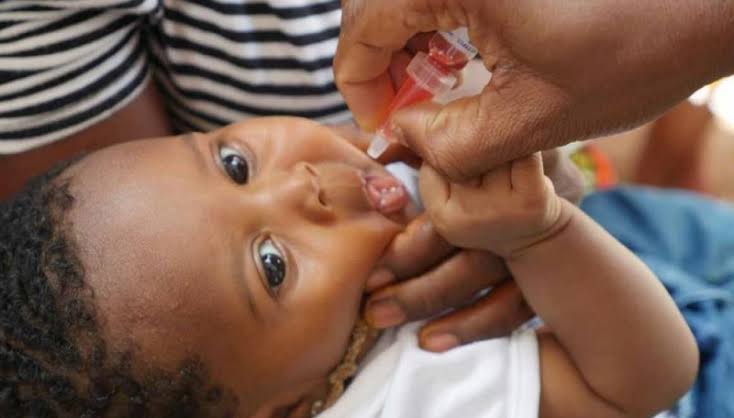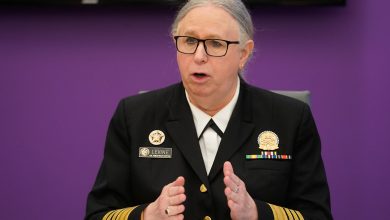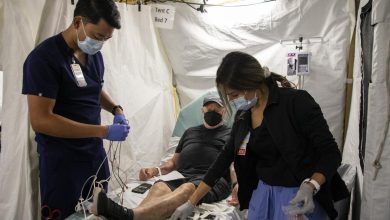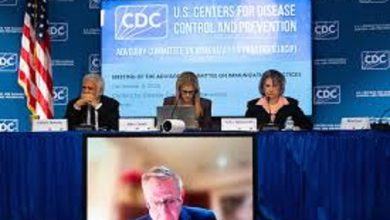Pakistan and Nigeria Report New Polio Cases: Is the World’s Eradication Goal at Risk?

Introduction
The announcement that “Pakistan and Nigeria report new polio cases” again this year is a jolt to global public-health watchers: polio — a disease the world has been racing to eliminate for more than three decades — remains dangerously close to reestablishing footholds in vulnerable communities. Recent detections in Pakistan of wild poliovirus type 1 (WPV1) and in Nigeria of circulating vaccine-derived poliovirus type 2 (cVDPV2) are reminders that eradication is not a finished chapter.
What was reported?
In late September 2025 Pakistan confirmed additional WPV1 cases in Sindh province, bringing the country’s 2025 total of wild poliovirus cases into the high-tens (official tallies reported 29 cases for the year as of the end of September). These cases were detected in young children in affected districts and follow an already difficult period for Pakistani eradication efforts.
At roughly the same time, Nigeria reported new cases of cVDPV2 (circulating vaccine-derived poliovirus type 2) from several states, adding to a year’s tally of dozens of such cases. cVDPV2 occurs when the weakened virus in the oral polio symptoms (used widely in outbreak response and mass campaigns) circulates long enough in an under-immunized population to genetically revert to a form that can cause paralysis. Nigeria’s 2025 cVDPV2 caseload is a reminder that vaccine-derived outbreaks, although preventable, remain a serious challenge in certain settings.
Wild poliovirus vs vaccine-derived poliovirus: why the distinction matters
Understanding the two forms of polio that appear in reports — wild poliovirus (WPV) and circulating vaccine-derived poliovirus (cVDPV) — is essential to interpreting both the risk and the response.
- WPV (wild poliovirus type 1) is the original, naturally circulating virus responsible for the historic global burden of paralytic polio. WPV has been confined to a shrinking set of geographies; as of 2025 Pakistan and Afghanistan remain the only countries with ongoing WPV1 transmission. Because WPV causes more frequent and severe outbreaks, any WPV detection is treated as an urgent international public-health emergency.
- cVDPV (circulating vaccine-derived poliovirus) arises, paradoxically, from the oral polio vaccine (OPV), which contains a weakened but live virus. In well-vaccinated communities the vaccine virus cannot circulate; but in pockets of low immunization, it can spread and mutate back to a neurovirulent form. cVDPV outbreaks, chiefly type 2 (cVDPV2), have become the most common form of polio detected in some regions in recent years. While cVDPV is vaccine-preventable through high coverage and targeted response campaigns, it requires different tactical emphasis — rapid, high-quality immunization campaigns using the appropriate vaccine formulation.
That Pakistan’s recent detections are WPV1 is especially worrying because WPV1 is the last remaining wild strain. Nigeria’s burden of cVDPV2, by contrast, reflects routine immunization gaps and surveillance challenges that allow vaccine-derived strains to circulate. Both are serious but require tailored responses.
Why are Pakistan and Nigeria still seeing cases?
Several overlapping factors explain why both countries — despite intense global attention and repeated campaigns — continue to detect polioviruses.
1. Persistent immunity gaps
Polio spreads where children remain unvaccinated or under-vaccinated. In Pakistan, repeated campaign fatigue, missed children in remote and mobile populations, and vaccine hesitancy in pockets of the population have created enough immunity gaps for WPV to persist. In Nigeria, routine immunization system weaknesses and fragile access in parts of the country have permitted cVDPV2 to circulate. Surveillance data and outbreak reports point repeatedly to sub-national areas of low coverage rather than uniformly low national coverage.
2. Conflict, insecurity, and attacks on health workers
In some areas where polio persists, insecurity undermines vaccination access. Pakistan has a long, tragic history of violence against polio teams and their security escorts; the resulting limitations on campaign reach and community trust have lasting consequences. Where vaccination teams cannot safely visit, children remain susceptible.
3. Environmental and humanitarian shocks
In 2025 Pakistan experienced catastrophic floods and large-scale displacement, putting millions into crowded camps with strained water, sanitation, and health services. Those conditions increase the risk of poliovirus transmission — both by concentrating susceptible children and by disrupting routine and campaign immunization activities. Stagnant water and overwhelmed health systems can amplify poliovirus spread if vaccination coverage drops even briefly.
4. Surveillance and laboratory detection improvements (and limits)
Better surveillance sometimes increases case detection, which is a mixed blessing: it means systems are working well enough to find poliovirus, but also reveals continuing transmission. Environmental surveillance (testing sewage and wastewater) has been pivotal in detecting silent circulation — Pakistan reported hundreds of positive environmental isolates in 2025 — indicating the virus is present in the population even between detected paralytic cases.
5. Funding and programmatic constraints
The Global Polio Eradication Initiative (GPEI) has repeatedly warned that fiscal shortfalls, competing priorities, and donor fatigue jeopardize the endgame. In 2025 the Emergency Committee and independent monitors stressed the need for reprogramming and stable financing to sustain campaigns, surveillance, and outbreak response. Funding gaps can limit vaccine supplies, campaign frequency, and critical innovations (like novel OPV2 use in some outbreak responses).
What are health authorities doing in response?
Global and national partners are deploying a multi-pronged response:
- Rapid outbreak response campaigns. When WPV1 or cVDPV2 cases are confirmed, partners launch targeted vaccination drives to quickly raise population immunity around detected cases. Pakistan has repeatedly implemented sub-national and national campaigns after new detections, often aiming to reach tens of millions of children.
- Intensified surveillance. Environmental surveillance (sewage sampling) and active case-finding for acute flaccid paralysis (AFP) help locate silent circulation and guide where to deploy teams. Pakistan has reported numerous WPV-positive environmental samples in 2025, underscoring the need for surveillance expansion and rapid follow-up.
- Tactical use of vaccines. For cVDPV2, specialized formulations (including novel OPV2 in some contexts) have been used to blunt transmission. These tools must be combined with high campaign quality and coverage to prevent further vaccine-derived spread. WHO guidance and national strategies direct which vaccine is best in each context.
- Community engagement and trust building. Rebuilding trust after misinformation and attacks requires sustained social mobilization, local leadership, and sometimes security arrangements to protect health workers. Pakistan and Nigeria both work with community leaders, religious figures, and local health staff to increase acceptance.
- Donor and partnership mobilization. GPEI partners (WHO, UNICEF, CDC, Rotary, Gavi, and others) continue to advocate for stable financing and targeted investment in the final endemic areas. High-level commitments — including major donor pledges — aim to cover vaccine costs, personnel, and surveillance needs.
What would a worst-case scenario look like — and how likely is it?
A worst-case scenario would be sustained WPV1 transmission in endemic foci with international spread to polio-free countries that have immunity gaps, leading to multiple outbreaks that set eradication timelines back by years. That scenario becomes more plausible if funding collapses or if insecurity prevents campaigns for prolonged periods.
However, the global machinery for polio eradication is strong: there is an experienced technical workforce, available vaccines, and decades of operational experience. The more realistic near-term risk is that eradication timelines stretch and costs rise — not that polio suddenly regains global endemicity identical to the 1980s. The difference hinges on continued political and financial commitment in the next 12–24 months.
What must happen now — clear, actionable priorities
To preserve the eradication goal and prevent backsliding, stakeholders should prioritize the following:
- Close immunity gaps with high-quality campaigns. Rapid, well-planned targeted immunization rounds around detected cases and in high-risk districts must reach every child. Microplanning and real-time monitoring are non-negotiable.
- Sustain and expand surveillance. Sewage testing and active AFP case detection must be resourced so authorities can find and stop silent transmission quickly.
- Protect health workers and build local trust. Security measures where necessary, plus long-term community engagement strategies, reduce refusals and protect the workforce that delivers vaccines.
- Invest in routine immunization systems. Outbreak response alone will not finish the job; countries need robust routine childhood vaccination systems so new generations are protected without constant campaigns.
- Secure predictable funding. Donors and global partners should fill gaps identified by the IMB and WHO so operations can be continuous and innovation (novel vaccines, operational research) can proceed.
- Tailor vaccine strategy to context. Use the correct vaccine tools — including novel OPV2 where appropriate — and ensure high coverage when deployed to avoid seeding further cVDPV transmission.
How individuals and countries can help
For people in affected or nearby countries, the most straightforward action is to ensure that children receive the full polio vaccine schedule and to participate in mass immunization campaigns when they are announced. Governments should prioritize health service continuity during disasters and fund routine immunization. International donors should treat eradication as a security investment: money spent now prevents far larger costs later. Finally, media and civil society can help combat misinformation and highlight why polio vaccination remains a life-saving act.
Conclusion:
The headline “Pakistan and Nigeria report new polio cases” is a sober reminder that the final stretch of eradication is fragile. Pakistan’s WPV1 detections and Nigeria’s cVDPV2 cases reflect different technical problems but the same core issue: anywhere children remain unprotected, poliovirus can exploit that weakness. The outcome now depends less on scientific unknowns and more on human choices — funding decisions, campaign quality, community engagement, and political will.




